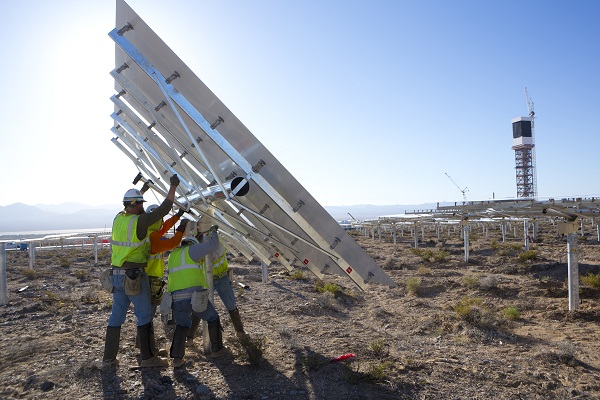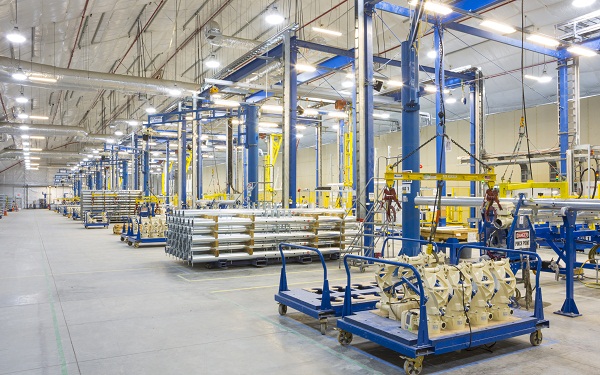Just days after marking the halfway point — and peak of employment — in the construction of the 392-megawatt Ivanpah concentrating solar plant, the project’s developers got some good news: work can continue at the desert site near the California/Nevada state line.
Courthouse News Service reported that the 9th U.S. Circuit Court of Appeals upheld a lower court decision denying a preliminary injunction sought by the environmental group Western Watersheds Project. The group claims the Department of the Interior, Bureau of Land Management and Fish and Wildlife Service haven’t complied with federal environmental laws in permitting the project, most notably in failing to protect the threatened desert tortoise.

In its decision [PDF], a three-judge panel of the court said the district court “properly weighed the environmental harm posed by the Ivanpah Solar Electric Generating System project against the possible damage to project funding, jobs, and the state and national renewable energy goals that would result from an injunction halting project construction.”
In January 2011, Western Watersheds sued to stop construction of the plant on “5.4 square miles of high quality habitat” for the desert tortoise. A federal judge denied a temporary restraining order soon after the suit was filed, then later said no to a preliminary injunction.
However, in April 2011, the BLM itself halted construction on two of the three units of the plant after determining that the developers – headed up by BrightSource Energy and NRG Energy, with Google also an investor – “reached, and in some categories, just exceeded the incidental take limit for further construction activities within Ivanpah 2, and Ivanpah 3.” Federal law defines “take” to mean “to harass, harm, pursue, hunt, shoot, wound, kill, trap, capture, or collect, or to attempt to engage in any such conduct.”

The problem was that there were a lot more tortoises on the site than had been originally estimated.
So in June 2011, a new Biological Opinion that included “new stipulations for translocating tortoise as well as new requirements for protecting them from predators and increased monitoring and fencing” was issued by the government, allowing work to resume.
The latest ruling doesn’t end the legal battle over Ivanpah; according to Courthouse News, both sides – Western Watersheds and the developers – have filed motions for summary judgment on the case. Then again, with the project motoring along, that might soon be moot.
BrightSource, meanwhile, has estimated it will “invest nearly $56 million in caring for desert tortoises,” including “$22 million in protection, care and translocation of the tortoises, as well as $34 million in land acquisition costs for the three-to-one mitigation required by the California Energy Commission.”

The developers, with construction partner Bechtel, announced earlier this month that some 2,100 construction workers and project support staff were onsite daily. Work on the $2.2 billion project, backed by $1.6 billion in guaranteed loans from the U.S. Department of Energy, began in October 2010 and despite the hiccups, BrightSource says power will begin to flow from the site next year.
“In the power block area, home to the major power plant equipment, workers have erected three steel tower structures to support the boilers which extend to a height of 459 feet, welding interconnecting pipe inside the boiler and installing power plant equipment,” the company said. “In the solar field, workers are installing the project’s 173,000 pylons and heliostats, which are assembled on-site at a rate of 500 each day. To date, workers have installed more than 100,000 steel pylons and nearly 50,000 heliostats.”